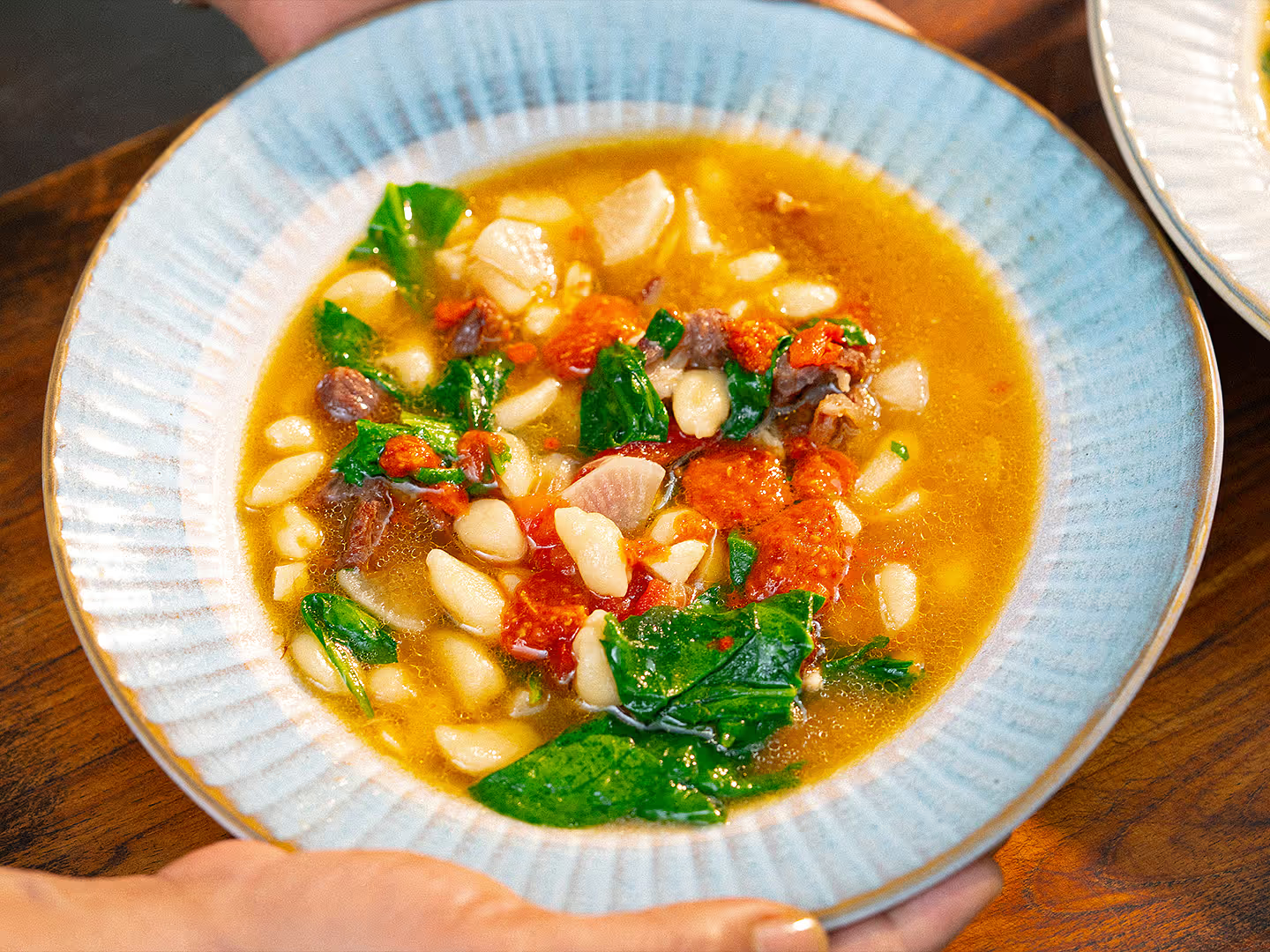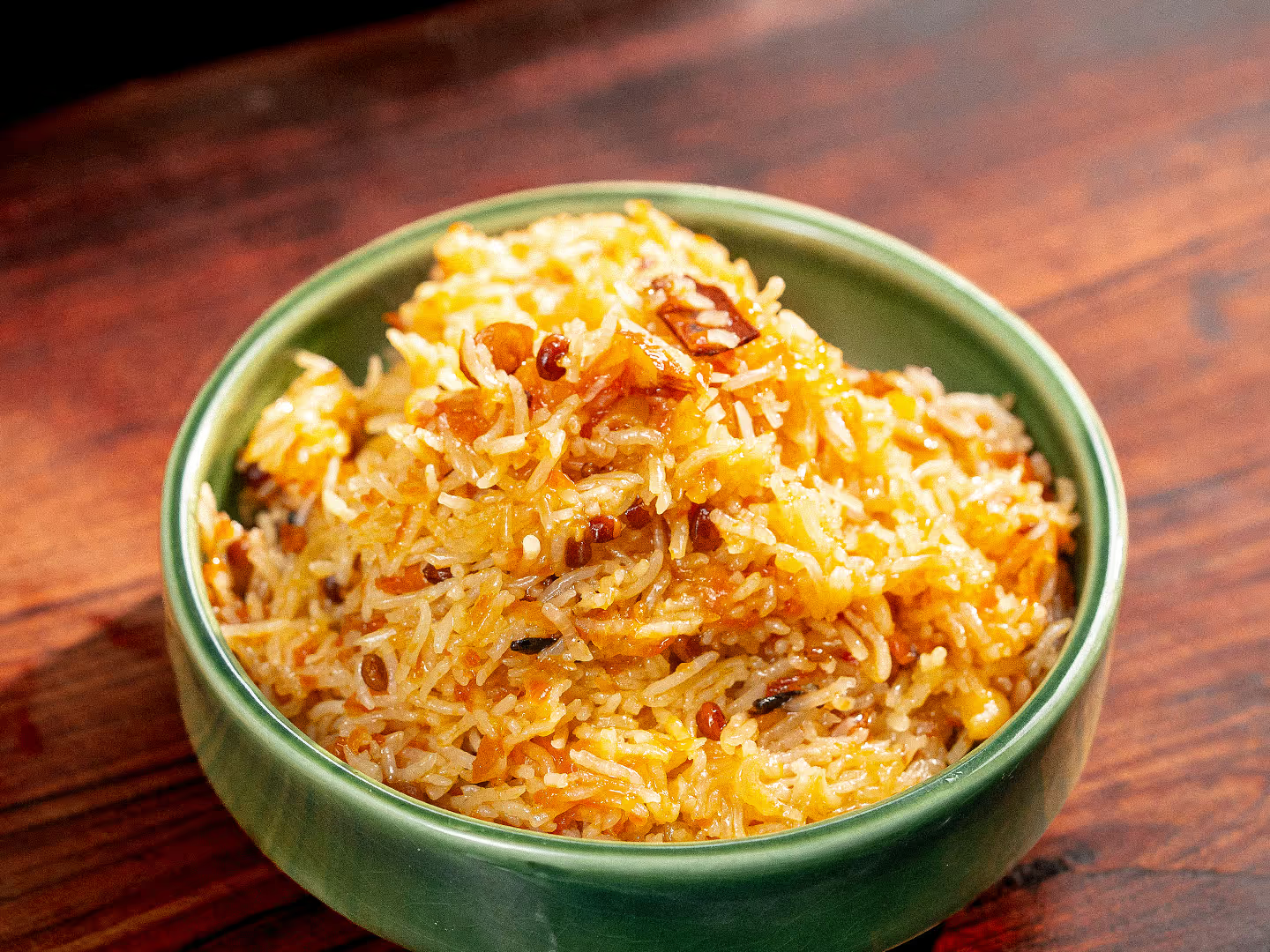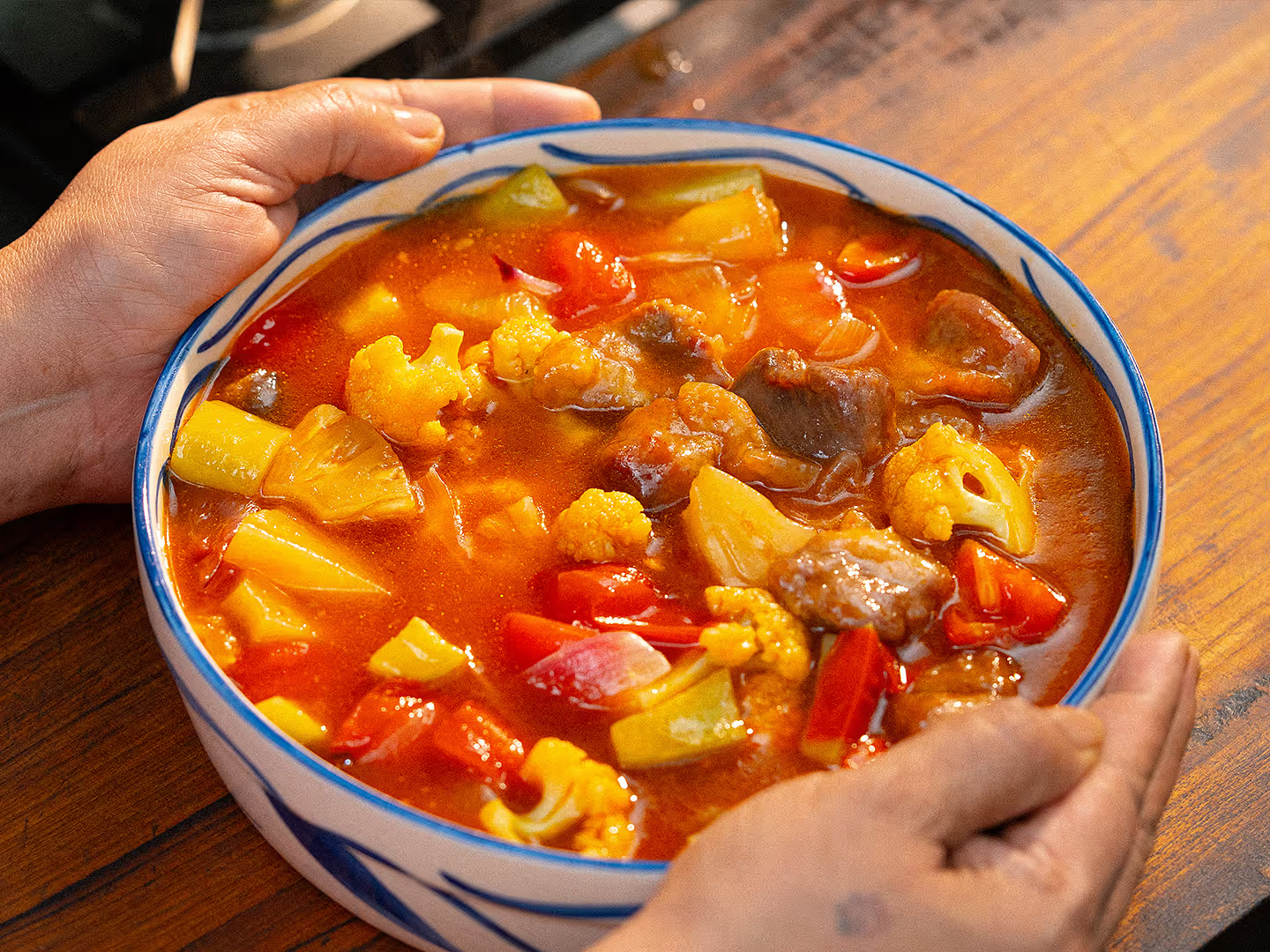Mutton Roll
Kolkata's Nizam-style special mutton roll—mutton kathi kabab, stir-fried with onions and green chillies, wrapped in soft, thin porota.
- Cooking time3 hours
- Calorieskcal
The kathi kabab and the kathi kabab roll originated at Nizam's on Hogg Street, Calcutta. This mutton roll is all about simplicity. A thin, crisp porota wraps succulent, slightly chewy mutton kababs with some onions, green chillies, and lots of lime juice. That's it. No ketchup, no green chilli sauce, no other condiments. Unlike most other well-known roll shops in Kolkata that use lachhha or layered porota (the kind shown in this egg-potato roll recipe), Nizam's porota is thin, single layered and shallow fried in very hot oil. This gives it the blistered brown outside and soft inside—so it can be easily rolled without cracking. The mutton kathi kabab, called so because the kababs are cooked on kathi or bamboo skewers instead of the usual metal skewers, is quite brilliant too. [To make this video with chicken kathi kababs, watch this video.] Because the roll is so simple, it lets the main components—porota and kabab—take centre-stage.
Frequently Asked Questions
Books in this recipe
Ingredients
For the kababs
- 500 g boneless mutton (meat from the leg)
- 50 g hung yoghurt
- 2 g nutmeg
- 2 g mace
- 4 g cloves
- 10 g mustard oil
- 5 g ginger
- 5 g garlic
- 10 g green papaya (only the skin)
- 2 g cumin powder
- 2 g red chilli powder
- ¼ tsp Kashmiri red chilli powder
- 5 g salt
- 3 g black salt
- 6 g malt vinegar
- ¼ tsp hot ghee
For the porota
- 240 g plain flour (maida)
- 5 g salt
- 10 g sugar
- 16 g vegetable shortening (dalda)
- 125 g water
- 30 g vegetable oil
- ½ tsp Kashmiri red chilli powder (optional)
- ½ tsp pepper
Toppings
- onions
- green chillies
- lime
Method
Making the kababs
- Trim excess fat from the mutton pieces. Each mutton piece should be about 4-cm, weighing about 20 g. The kababs will shrink further when cooked.
- Grind nutmeg, mace, and cloves to a fine powder. Roughly chop ginger and garlic. Peel a green papaya; we will use the skin (finely chopped) to tenderise the meat.
- Add ginger, garlic, papaya skin, cumin powder, red chilli powder, Kashmiri red chilli powder, ¼ tsp of the ground nutmeg-mace-clove powder, salt, black salt, and malt vinegar to a grinder. Grind to a smooth paste.
- Prick the mutton pieces with a fork or toothpick.
- In a mixing bowl, add the mutton pieces and the spice mix. Rub in the marinade well to make sure every mutton piece is coated with the mixture. Let it rest for 15 minutes.
- Drain excess liquid from the mixing bowl. The marinade must contain as little moisture as possible.
- Add hung yoghurt to the marinated meat. Mix again.
- To give the meat a smoky flavour, first, set a small metal bowl (or a DIY bowl fashioned from aluminium foil) in the middle of the marinated mutton pieces. Next, burn a piece of charcoal directly over the flame until you see a layer of ash on the outside (this will take about 5–7 minutes). Then, place it in the metal bowl and pour hot ghee over it. Cover the entire bowl with aluminium foil and weigh it down with a plate. This is the ‘dhungar’ method of infusing burnt-charcoal flavour to a dish. Remove charcoal after 15 minutes.
- Drizzle mustard oil and mix everything one last time. Allow the mutton to marinate for another 1.5 hours.
- Soak bamboo skewers or kathi in water. This prevents them from charring in the oven. Preheat the oven to 200°C for 15 minutes.
- Fold each mutton piece in half before threading it through the skewer. This keeps the kababs compact and hence juicy. This also prevents them from spreading in the oven.
- Arrange the skewers on a grilling tray and roast in a preheated oven at 200°C for 30 minutes.
- Apply melted butter halfway through, flip the skewers and resume roasting. Continue baking until it is done.
- Remove from the oven and char the kababs over direct flame.
Making the porota
- In a mixing bowl, take maida, salt, sugar, and dalda/ghee.
- Rub dalda into the flour until it resembles breadcrumbs in texture. This step is important for making flaky porota.
- Add water and knead continuously until the dough is smooth, soft and pilable. This will take around 5 minutes.
- Coat the dough with vegetable oil. Cover and let it rest for 30 minutes.
- Once the dough is rested, divide in 100 g portions. Roll out the porotas (in case you find that the dough keeps springing back, rest it for another 10 minutes or so and it should be more pliable again).
- Heat a skillet. Once it is very hot, add vegetable oil, 3-mm deep.
- Add porota to the skillet. Keep rotating and frying. Flip to fry the other side, until blistered and golden. This should take about 2 minutes.
Assembling
- Slice onions. Chop green chillies. Cut lime.
- Pour vegetable oil into a skillet. Add sliced onions and green chillies.
- Add the kababs and pepper. You can also add some Kashmiri red chilli powder for colour.
- Fry everything on high heat for 30 seconds only. Don't let the onions go soft. Remove from the heat immediately.
- On a hot, freshly-fried porota, arrange the stir-fried mutton kababs. Top with the stir-fried onions and green chillies. Sprinkle chaat masala. Squeeze lime juice. Be generous with the lime; the zing cuts through the richness of the kabab.
- Finally, roll it up as tight and as neat as you can, and wrap the bottom half in paper, tucking away any excess.




























